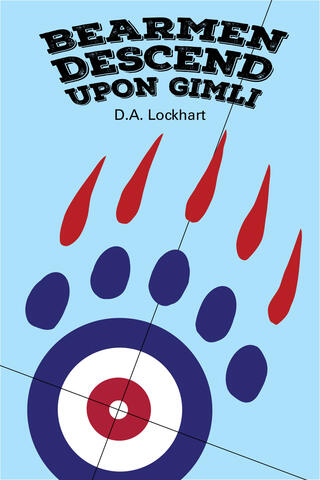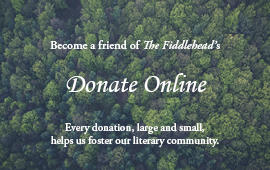
One of the best books I’ve read this year is D.A. Lockhart’s 2021 verse novel Bearmen Descend Upon Gimli, a virtuosic fusion of narrative, lyric, athletic, and mythological forms. Lockhart stages an epic Manitoban bonspiel as an allegory or roadmap for storytelling and sports as anticolonial resistance. As the Bearmen’s stones make “the world crack apart,” the collection is a story about literally remaking the world through curling — or maybe through stories about curling.
Among Lockhart’s many awesome moves, he consistently represents the landscape on which the curlers play — land, water, and curling ice — as not just the staging ground for lyric narrative, but also as the narrative’s form and voice. For example, in the poem “Rise of the New Prophet,” the protagonist (Northwind) is literally inspired (I mean breathed-into) by the form and voice of the landscape: “The song sings down to Northwind coaxes his movements into the lines and pathways he can’t see.”
Recently, I’ve been researching Canadian sports lyrics. One trend I’ve noticed in poems about winter sports — hockey, ice skating, curling, and so on — is that we often use ice as a metaphor or symbol for silence, motionlessness, death, and empty wilderness. In What Is Sport?, Roland Barthes explicitly claims that Canadian sport represents a project of nation-making through victory over our “frozen” landscape: “To play hockey is constantly to repeat that men have transformed motionless winter, the hard earth, and suspended life […] The children seem to be fighting, but they are merely learning to inhabit their country.”
I’ve been tracking an entire sub-genre of Canadian sports lyric that deals with ice and land in a similar fashion — ice as death, ice as motionlessness, ice as “frozen” landscape, victory over ice as victory over death and the land itself. But in Bearmen, Lockhart provocatively inverts these national mythologies and narratives. In this collection, stone (especially curling stones, highways, and mountains) is impermanent and fleeting and breakable, while ice (ever flowing, ever changing and cycling) represents life and resilience and poiesis: “declaring / Treaty I land is leased land / and the landlords have returned / to move stone, carve their ways / again into ice and stories to come” (“God’s Lake Dawn Awakes Gimli for the First Day of Bonspiel”). By staging his curling tournament on a geologic timeline, and by inviting his poem’s audiences to interact with figurative “ice” and “stone” in new, different ways, Lockhart questions settler conceptions of time, competition, victory, and permanence. Like bears who wait out icy winters in their torpor, Lockhart makes his team of “Bearmen” “win” by outlasting and reframing the game they’re playing.
Meghan Kemp-Gee is the author of The Animal in the Room (2023) and two poetry chapbooks. She also co-created CONTESTED STRIP, the world’s best comic about ultimate frisbee.
Read Meghan Kemp Gee's poems in Issue 296 (Summer Poetry 2023)









